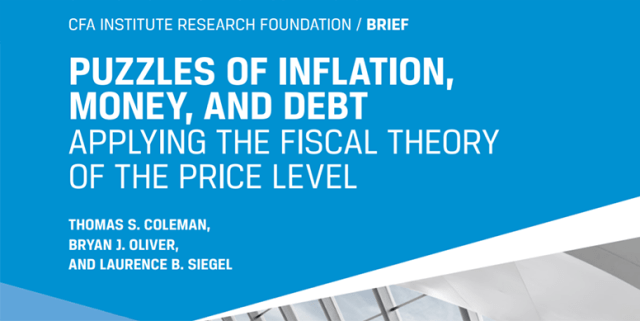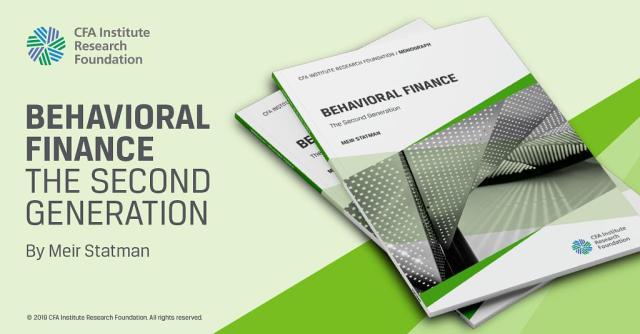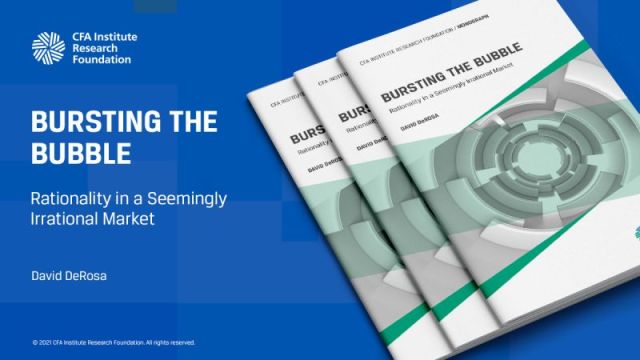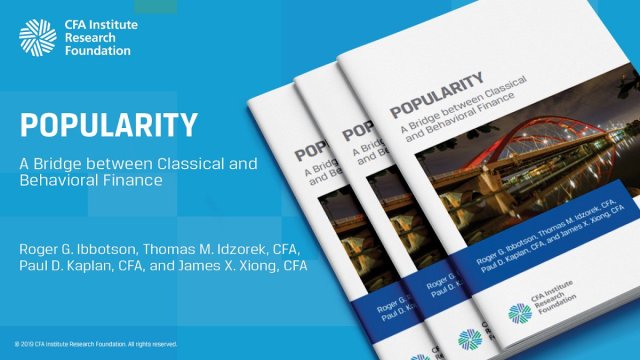[ad_1]
Causality is a feature of life, as it is for capital markets.
It is time to accept this basic principle in investment management.
Here is why and how.
Why Causality Matters
Causality has been defined in various ways in philosophy, statistics, economics, computer science, and other disciplines. As humans, we want to understand what we encounter, and causation, in its simplest form, gives the reason behind a phenomenon. We observe something, then see that something else happens, and wonder whether and how they might be related. Alternatively, we might also consider whether something would happen in the absence of a certain factor or whether that factor is a necessary prerequisite.
If the presence or absence of one event has an effect on another, then we may be able to bring something into existence and change reality. If we truly understand an event and how it is related to other events, we may be able to cause an event we favor to happen — or prevent one we don’t favor from happening — and thus adapt our decision making accordingly.
Causality is therefore a concept of human thinking that helps answer the why of phenomena: It structures the way in which we interact with our environment.
We analyzed 191 journal articles on causality testing in equity markets published between 2010 and 2020 to identify the most widely used causality tests. Our methodology was that of a systematic literature review, and our analysis focused on the distribution by year; journal reputation; the geographical focus, by country, category, or region; commonly treated themes; and the common causality tests and approaches.
Although causality is a broad and complex topic, we arranged and mapped the findings from these papers to provide clarity to academics as well as finance and investment professionals so that they can better identify current research trends and quickly find additional literature on related topics. We also wanted to encourage them to think about how to include causality assessments into their work. One example of immediate practical relevance: Net Zero Portfolio Management requires thinking in terms of path-dependent impact.
Forecasting vs. Nowcasting with Causality
Causal discoveries help us make better sense of the world around us. By helping us understand relevant laws of nature — assuming they exist — causality can give us prescriptive evidence for our analysis and guide us towards improved decisions. Indeed, causal knowledge and inferences based on it are critical for effective decision making. Nancy Cartwright even suggests that causal laws are required to distinguish between effective and ineffective strategies.
Throughout the history of science, causality is among the fundamental research questions and the ultimate objective for many studies. Some of these studies try to make predictions about the future. But anticipating or predicting consequences is only one aspect of causality. Indeed, in describing empirically based causal theories, Michael Joffe confirms that economic theory prioritizes prediction, while the natural sciences primarily aim to show how the world works.
The Forward-Looking Case for Causality
Financial markets are complex, dynamic, and forward-looking. They are driven by many heterogeneous market participants with imperfect information and bounded rationality. Therefore, a causal understanding of its drivers is both appealing and potentially very lucrative. Yet given the speed and informational efficiency of markets, uncovering causal relationships is not only extremely difficult, but the benefits of doing so tend to be short-lived as the market assimilates the information quickly.
Causal knowledge has an appeal because it can affect decisions by changing our expectations on outcomes. It provides insight on what information we should look for — how each piece of information should be weighed, and what variables should be targeted — if we cannot directly manipulate the outcome.
But how do we gain this causal knowledge? We can imagine situations in which market participants and businesses ask themselves why or how something happened? But precisely formulating these reverse causal inference questions is an impossible task. It will become an a posteriori phenomenon.
Even if all past data were accessible and we understood and interpreted it correctly, we cannot guarantee that we would act on it appropriately. The statistics and econometrics literature on causality focuses instead on forward causal questions or “effects of causes.” That is, what happens when, or what if . . . It does not focus on reverse causal inference or the “causes of effects” — that is, why does this happen — with the latter often inspiring the former.
Correlation Does Not Imply Causation
In any introductory statistics or Economics 101 course, students learn the mantra “correlation does not imply causation.” Because two or more things change together does not necessarily mean that one is the reason for or the cause of the other. Yet, our heuristic thinking wants to link the two, although correlation is neither necessary nor sufficient to establish causation. Correlation does not explain the why or the how, but simply notes that the changes occur together.
So, what’s behind our tendency to mistake correlation for causation? There are at least three biases, according to Michael R. Waldmann, that may provide an explanation. These are representation bias whereby we give more weight to certain information; confirmation bias in which we misrepresent the data to confirm our previous thinking; and illusion of control bias wherein we believe we have more influence on our surroundings than we actually do.
But causality is more than correlation. It indicates that one event, process, or state, that is, the effect or dependent variable, is the result of the occurrence of another event, process, or state, or the cause or independent variable. A cause is at least in part responsible for the effect, while the effect, at least in part, depends on the cause. Peter Spirtes, Clark Glymour, and Richard Scheines describe this more formally as a stochastic relation between events in a probability space where one event causes another event to occur.
Probability is an important aspect since the cause makes the effect more likely. James Woodward explains, however, that causality deals with regularities in a given environment that go beyond associational or probabilistic relations because it helps us better understand how a consequence changes when we manipulate the cause.
Research Study Design
In our study, we systematically reviewed the peer-reviewed journal papers on causality in equity or stock markets relevant to investment and finance professionals over the 11-year time period. Our sample included only articles that performed causality tests and that mainly focused on the equity markets.
Our analysis revealed five essential takeaways about the literature on causality:
1. There is a dominant preference for quantitative assessment techniques to measure causality.
Correlation-based techniques were prominent among these, especially the bivariate C. W. J. Granger causality test. These 27 bivariate Granger tests, along with many multivariate Granger causality tests and Granger causality within nonlinear data, lead us to conclude that causality in the equity markets is predominantly understood as prediction.
2. The lack of qualitative assessment techniques underlines a weakness in current causality-testing research.
These heuristics-based techniques would support investment professionals the most when it comes to uncertainty management, or when unknown unknowns need to be understood. This opens an avenue for new research activities in the years to come.
3. The causality testing domain increasingly switches from focusing on forecasting to nowcasting.
Instead of predicting consequences, causality assessment can help us understand how an aspect of the world works.
4. The time distribution showed a slight increase in interest in the topic year over year.
The year 2018 was the outlier of the 11 years in our sample period, with 27 papers published on causality and the equity markets. That’s 10 more than the yearly average.
5. India, the United States, and China were the most-studied countries within our sample.
Given the size of these countries and their academic communities, this is hardly a surprise. But it does show there is ample space for causality analysis on the stock markets of other economies.
If you liked this post, don’t forget to subscribe to the Enterprising Investor.
All posts are the opinion of the author. As such, they should not be construed as investment advice, nor do the opinions expressed necessarily reflect the views of CFA Institute or the author’s employer.
Image credit: ©Getty Images / happyphoton
Professional Learning for CFA Institute Members
CFA Institute members are empowered to self-determine and self-report professional learning (PL) credits earned, including content on Enterprising Investor. Members can record credits easily using their online PL tracker.
[ad_2]
Image and article originally from blogs.cfainstitute.org. Read the original article here.





